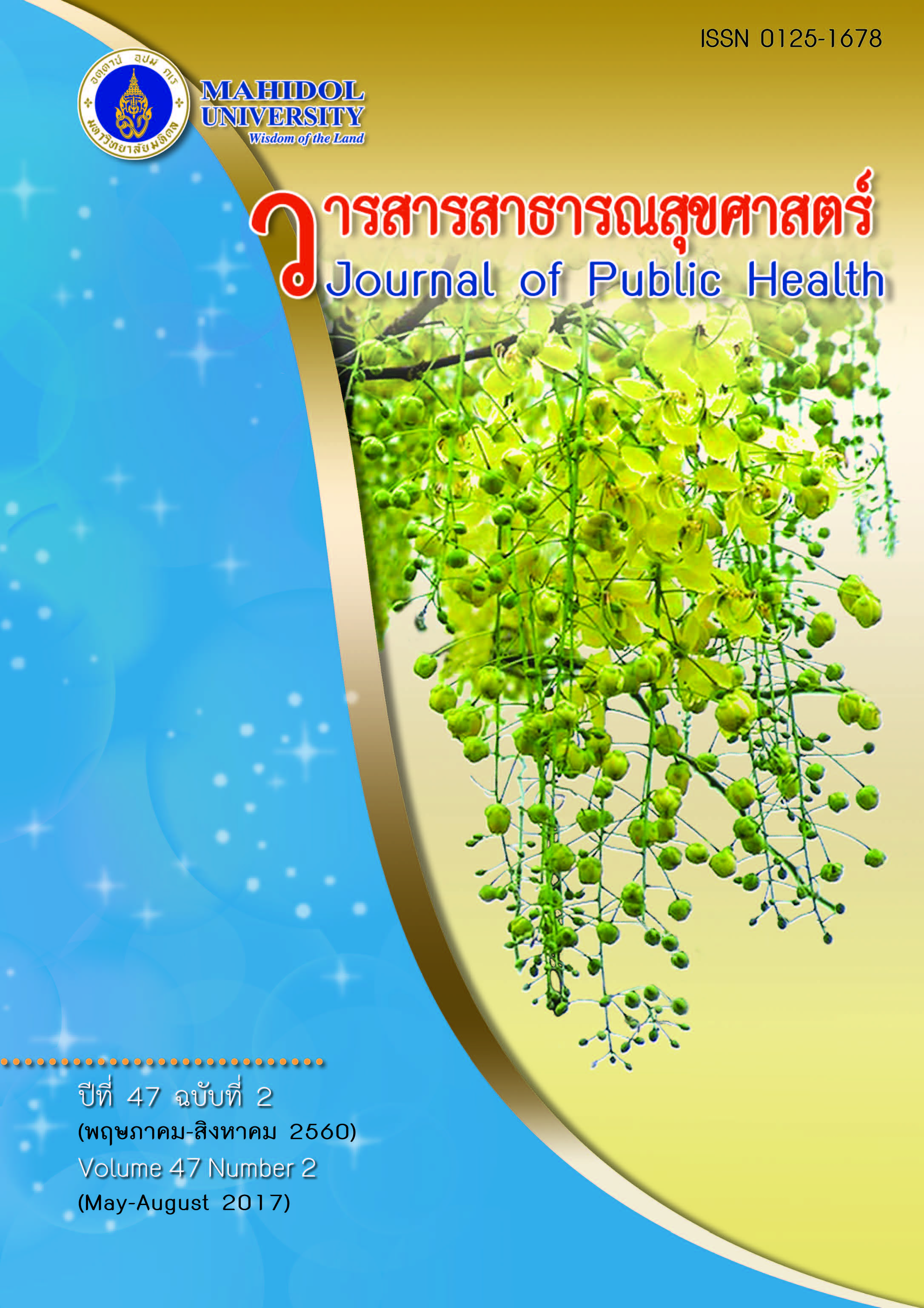Windrow Composting of Food and Yard Wastes
Keywords:
food waste, yard waste, compost, nutrient, มูลฝอยเศษอาหาร, มูลฝอยจากสวน, การหมัก, ธาตุอาหาร, การหมักแบบกองแถวAbstract
Organic waste from public consumption is a problem for waste management. The university campus in Tambol Salaya, Nakorn Prathom Province, a community with a large population, needed to find effective strategies for sustainable waste management. This study aimed to find a proper solution for two major organic wastes, food and yard wastes. Windrow composting was investigated at different conditions including mixing ratios and aerations in the field experiment for 8 weeks. The organic wastes and composted material samples were analyzed for physical and chemical characteristics including moisture content, temperature, pH, organic matter, total nitrogen, total phosphorus and total potassium. Two way ANOVA analysis and LSD post-hoc test were used for statistical analysis. The results showed that food waste had high nitrogen and moisture content while yard waste had high organic carbon. To compost the organic materials without aeration supply conditions revealed significant difference (p < 0.05) in higher composting temperature while the higher mixing ratio could significantly increase (p<0.05) organic matter. The composting was finished at week 8 and composted materials had a lower temperature and neutral pH. The nutrients, nitrogen and phosphorus were increased whereas potassium was slightly decreased, thus they could match with the organic fertilizer standard. The food yard waste ratio of1:1, without aeration was a suitable organic composting condition. The findings can also be used as an application criterion for other communities which recycle nutrients back to the environment
การหมักเศษอาหารและมูลฝอยจากสวนแบบกองแถว
มูลฝอยอินทรีย์เป็นปัญหาสำคัญของการจัดการมูลฝอย วิทยาเขตของมหาวิทยาลัยในตำบลศาลายา จังหวัดนครปฐม มีประชากรมาก จำเป็นต้องมีการจัดการมูลฝอยอย่างยั่งยืน ศึกษาการจัดการมูลฝอยอินทรีย์คือ มูลฝอยเศษอาหารและมูลฝอยจากสวน หมักแบบกองแถวในการทดลองภาคสนาม 8 สัปดาห์ สภาวะการหมักมีอัตราผสมและการเติมอากาศแตกต่างกัน วิเคราะห์ลักษณะสมบัติทางกายภาพและเคมี คือ ความชื้น อุณหภูมิ ค่าความเป็นกรด-ด่าง อินทรียสาร ไนโตรเจนทั้งหมด ฟอสฟอรัสทั้งหมด และโปแตสเซียมทั้งหมด ใช้สถิติ Two way ANOVA และ LSD post-hoc ผลการศึกษาพบว่า มูลฝอยเศษอาหารมีไนโตรเจนและความชื้นสูง มูลฝอยจากสวนมีอินทรีย์คาร์บอนสูง สภาวะหมักที่ไม่เติมอากาศทำให้อุณหภูมิแถวกองสูงอย่างมีนัยสำคัญ (p < 0.05) ส่วนอัตราการผสมสูงมีนัยสำคัญ ทำให้อินทรียสารสูง (p < 0.05) การหมักสิ้นสุดที่สัปดาห์ที่ 8 โดยวัสดุหมักมีอุณหภูมิต่ำลงและมีค่าความเป็นกรด-ด่างที่ปานกลาง ธาตุอาหารที่เป็นไนโตรเจนและฟอสฟอรัสเพิ่มขึ้น แต่มีโปรแตสเซียมลดลงเล็กน้อย มีลักษณะสมบัติตามมาตรฐานปุ๋ยอินทรีย์ แนะนำสภาวะที่เหมาะสำหรับหมักมูลฝอยอินทรีย์ คือ อัตราส่วนมูลฝอยเศษอาหารและมูลฝอยจากสวน 1:1 โดยน้ำหนัก แบบไม่เติมอากาศ ผลการศึกษาสามารถใช้แนะนำให้ชุมชนอื่น ซึ่งช่วยนำธาตุอาหารกลับมาใช้ใหม่ในสิ่งแวดล้อม
Downloads
Published
Issue
Section
License
Creative Commons License CC-BY-ND


